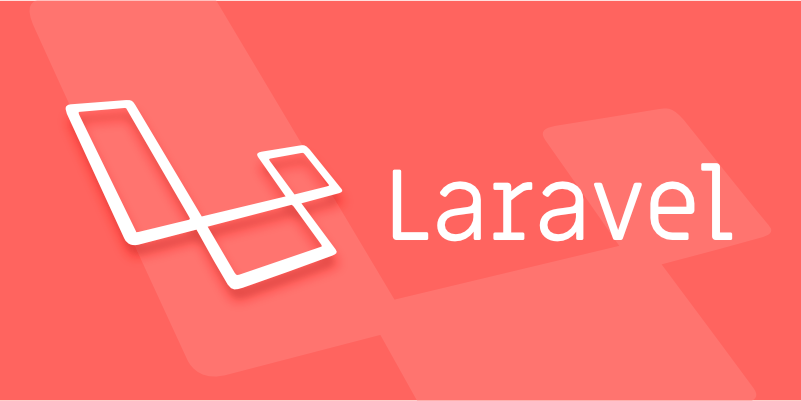Laravel packages are created by setting up a proper structure, writing service providers, distributing via Composer, and avoiding common pitfalls. First, create a directory with a composer.json for autoloading and Laravel integration. Second, build the core logic in src/ and register it via a Service Provider using register() and boot() methods. Third, distribute via Packagist by tagging releases and submitting to GitHub. Lastly, test installation steps, use PSR-4 correctly, avoid hardcoded paths, and always run composer dump-autoload after changes.

Laravel is a powerful PHP framework, and one of its strengths lies in how easily you can extend it using custom packages. If you’ve built something reusable — like a service integration, a set of helpers, or a specific functionality you want to reuse across projects — packaging it up makes sense. Here’s how to do that effectively.

Setting Up Your Package Structure
Before jumping into code, you need a proper structure for your package. Laravel uses Composer to manage dependencies, so your package should follow Composer standards.

You’ll typically start by creating a new directory outside your Laravel project (or inside packages if you're keeping everything together). Inside this folder, create the basic files:
-
composer.json– This defines your package metadata. -
src/– Where your actual code lives. - Optional: tests, config, migrations, etc.
A minimal composer.json might look like this:

{
"name": "yourname/laravel-package",
"autoload": {
"psr-4": {
"YourName\\YourPackage\\": "src/"
}
},
"extra": {
"laravel": {
"providers": [
"YourName\\YourPackage\\YourPackageServiceProvider"
]
}
}
}This sets up autoloading and tells Laravel which service provider to use when the package is installed.
Writing the Core Logic and Service Provider
The heart of any Laravel package is usually a Service Provider. This is where you register bindings, publish configuration files, and integrate with Laravel’s core.
Let’s say you’re building a logging utility. You’d have a class like Logger.php in your src/ folder, and then in your service provider’s register() method, you might bind it:
use YourName\YourPackage\Logger;
public function register()
{
$this->app->singleton(Logger::class, function ($app) {
return new Logger(config('yourpackage.log_level'));
});
}Also, if you need configuration, publish it from the service provider:
public function boot()
{
$this->publishes([
__DIR__.'/../config/yourpackage.php' => config_path('yourpackage.php'),
], 'config');
}This allows users to run php artisan vendor:publish and customize settings.
Distributing Your Package via Composer
Once your package works locally, you’ll probably want to share it. The easiest way is through Packagist, which integrates directly with Composer.
Here’s what to do:
- Make sure your
composer.jsonhas correct versioning ("version": "1.0.0"or use tags). - Push your package to GitHub (or another Git repo).
- Submit your repo to Packagist, or use automatic hooks.
- Tag releases using Git tags (
git tag 1.0.0 -m "Initial release").
After that, anyone can install your package with:
composer require yourname/laravel-package
If you don’t want to publish publicly yet, you can still test it locally by pointing Composer to a path:
In your Laravel app’s composer.json:
{
"repositories": [
{
"type": "path",
"url": "../path-to-your-package"
}
]
}Then run composer require yourname/laravel-package --prefer-source.
Common Gotchas and Tips
There are a few things people often miss when developing Laravel packages:
- ? Always test installation steps fresh — delete
vendor/and reinstall to simulate a real user experience. - ? Use PSR-4 correctly — mismatched namespaces and paths cause most autoload issues.
- ? Don’t hardcode paths — use
__DIR__ordirname(__FILE__)instead. - ? Consider adding Laravel Octane compatibility if you expect high performance usage.
- ? Be careful with facades — they work but can make testing harder.
- ? Include a README with clear instructions on installation and usage.
One thing that trips people up is forgetting to run composer dump-autoload after changes — especially when working locally. It’s easy to think your changes aren’t working when really, Composer just hasn’t reloaded the class map.
Basically, developing and distributing Laravel packages boils down to following standard Composer practices and leveraging Laravel’s service provider system. Once you get the structure right, the rest flows pretty naturally.
No magic involved — just good organization and attention to detail.
The above is the detailed content of Developing and Distributing Custom Packages for Laravel. For more information, please follow other related articles on the PHP Chinese website!

Hot AI Tools

Undress AI Tool
Undress images for free

Undresser.AI Undress
AI-powered app for creating realistic nude photos

AI Clothes Remover
Online AI tool for removing clothes from photos.

Clothoff.io
AI clothes remover

Video Face Swap
Swap faces in any video effortlessly with our completely free AI face swap tool!

Hot Article

Hot Tools

Notepad++7.3.1
Easy-to-use and free code editor

SublimeText3 Chinese version
Chinese version, very easy to use

Zend Studio 13.0.1
Powerful PHP integrated development environment

Dreamweaver CS6
Visual web development tools

SublimeText3 Mac version
God-level code editing software (SublimeText3)

Hot Topics
 What are policies in Laravel, and how are they used?
Jun 21, 2025 am 12:21 AM
What are policies in Laravel, and how are they used?
Jun 21, 2025 am 12:21 AM
InLaravel,policiesorganizeauthorizationlogicformodelactions.1.Policiesareclasseswithmethodslikeview,create,update,anddeletethatreturntrueorfalsebasedonuserpermissions.2.Toregisterapolicy,mapthemodeltoitspolicyinthe$policiesarrayofAuthServiceProvider.
 How do I create new records in the database using Eloquent?
Jun 14, 2025 am 12:34 AM
How do I create new records in the database using Eloquent?
Jun 14, 2025 am 12:34 AM
To create new records in the database using Eloquent, there are four main methods: 1. Use the create method to quickly create records by passing in the attribute array, such as User::create(['name'=>'JohnDoe','email'=>'john@example.com']); 2. Use the save method to manually instantiate the model and assign values ??to save one by one, which is suitable for scenarios where conditional assignment or extra logic is required; 3. Use firstOrCreate to find or create records based on search conditions to avoid duplicate data; 4. Use updateOrCreate to find records and update, if not, create them, which is suitable for processing imported data, etc., which may be repetitive.
 What is the purpose of the artisan command-line tool in Laravel?
Jun 13, 2025 am 11:17 AM
What is the purpose of the artisan command-line tool in Laravel?
Jun 13, 2025 am 11:17 AM
Artisan is a command line tool of Laravel to improve development efficiency. Its core functions include: 1. Generate code structures, such as controllers, models, etc., and automatically create files through make: controller and other commands; 2. Manage database migration and fill, use migrate to run migration, and db:seed to fill data; 3. Support custom commands, such as make:command creation command class to implement business logic encapsulation; 4. Provide debugging and environment management functions, such as key:generate to generate keys, and serve to start the development server. Proficiency in using Artisan can significantly improve Laravel development efficiency.
 How do I run tests in Laravel? (php artisan test)
Jun 13, 2025 am 12:02 AM
How do I run tests in Laravel? (php artisan test)
Jun 13, 2025 am 12:02 AM
ToruntestsinLaraveleffectively,usethephpartisantestcommandwhichsimplifiesPHPUnitusage.1.Setupa.env.testingfileandconfigurephpunit.xmltouseatestdatabaselikeSQLite.2.Generatetestfilesusingphpartisanmake:test,using--unitforunittests.3.Writetestswithmeth
 How do I install Laravel on my operating system (Windows, macOS, Linux)?
Jun 19, 2025 am 12:31 AM
How do I install Laravel on my operating system (Windows, macOS, Linux)?
Jun 19, 2025 am 12:31 AM
Yes,youcaninstallLaravelonanyoperatingsystembyfollowingthesesteps:1.InstallPHPandrequiredextensionslikembstring,openssl,andxmlusingtoolslikeXAMPPonWindows,HomebrewonmacOS,oraptonLinux;2.InstallComposer,usinganinstalleronWindowsorterminalcommandsonmac
 How do I define methods (actions) in a controller?
Jun 14, 2025 am 12:38 AM
How do I define methods (actions) in a controller?
Jun 14, 2025 am 12:38 AM
Defining a method (also known as an action) in a controller is to tell the application what to do when someone visits a specific URL. These methods usually process requests, process data, and return responses such as HTML pages or JSON. Understanding the basic structure: Most web frameworks (such as RubyonRails, Laravel, or SpringMVC) use controllers to group related operations. Methods within each controller usually correspond to a route, i.e. the URL path that someone can access. For example, there may be the following methods in PostsController: 1.index() – display post list; 2.show() – display individual posts; 3.create() – handle creating new posts; 4.u
 What are controllers in Laravel, and what is their purpose?
Jun 20, 2025 am 12:31 AM
What are controllers in Laravel, and what is their purpose?
Jun 20, 2025 am 12:31 AM
The main role of the controller in Laravel is to process HTTP requests and return responses to keep the code neat and maintainable. By concentrating the relevant request logic into a class, the controller makes the routing file simpler, such as putting user profile display, editing and deletion operations in different methods of UserController. The creation of a controller can be implemented through the Artisan command phpartisanmake:controllerUserController, while the resource controller is generated using the --resource option, covering methods for standard CRUD operations. Then you need to bind the controller in the route, such as Route::get('/user/{id
 How do I customize the authentication views and logic in Laravel?
Jun 22, 2025 am 01:01 AM
How do I customize the authentication views and logic in Laravel?
Jun 22, 2025 am 01:01 AM
Laravel allows custom authentication views and logic by overriding the default stub and controller. 1. To customize the authentication view, use the command phpartisanvendor:publish-tag=laravel-auth to copy the default Blade template to the resources/views/auth directory and modify it, such as adding the "Terms of Service" check box. 2. To modify the authentication logic, you need to adjust the methods in RegisterController, LoginController and ResetPasswordController, such as updating the validator() method to verify the added field, or rewriting r






